15 Ng. 100 Đ. Nguyễn Xiển, Thanh Xuân Nam, Thanh Xuân, Hà Nội 100000
When you think of Singapore, a majestic creature, half-lion and half-fish, instantly comes to mind. This is the Merlion, the national personification and enduring symbol of the Lion City. At its heart lies Merlion Park, a vibrant waterfront landmark that offers more than just a photo opportunity; it's a window into Singapore's rich mythology, a testament to its modern marvels, and a bustling hub of activity that draws millions of visitors annually.
Located at One Fullerton, overlooking the picturesque Marina Bay, Merlion Park is an essential stop on any Singapore itinerary. It’s a place where history meets contemporary urban splendor, where the gentle lapping of the bay waters harmonizes with the constant click of cameras, capturing the iconic Merlion spouting water against the backdrop of Singapore's stunning skyline.
The story of the Merlion is deeply intertwined with Singapore's foundational myths and its journey from a humble fishing village to a gleaming metropolis.
The "Mer" (sea) part of the Merlion's name references Singapore's origins as a fishing village, or "Temasek" (meaning "sea town" in Old Javanese). The "lion" part comes from the legend of Prince Sang Nila Utama, a Srivijayan prince from Palembang who, upon rediscovering Temasek in the 11th century, spotted a magnificent creature he believed to be a lion. He then renamed the island "Singapura," which means "Lion City" in Sanskrit ("Singa" for lion, "Pura" for city).
While the historical accuracy of a lion ever existing in Singapore is debated (tigers were more likely native predators), the tale of the Merlion beautifully blends these two crucial aspects of Singapore's identity: its maritime roots and its legendary "Lion City" moniker.
The Merlion as a symbol was conceived in 1964 by Fraser Brunner, a member of the Souvenir Committee and curator of the Van Kleef Aquarium. It was designed to be the emblem of the Singapore Tourism Promotion Board (STPB), now the Singapore Tourism Board (STB), to effectively brand and promote Singapore to the world. Its unique hybrid form instantly captured the imagination, representing Singapore's humble beginnings as a fishing village (the fish body) and its bold ambition as the "Lion City" (the lion head).
The primary Merlion statue, designed by local craftsman Lim Nang Seng, was completed and unveiled on September 15, 1972, by then-Prime Minister Lee Kuan Yew. It stood at the mouth of the Singapore River, near the current Esplanade Bridge, symbolizing its role as a guardian of the city's harbor and welcoming visitors.
As Singapore's landscape evolved, particularly with the reclamation of land around Marina Bay, the original Merlion's position became obscured by the construction of the Esplanade Bridge. To ensure its continued prominence and uninterrupted water-spouting action, the statue was carefully relocated in 2002 to its current, more prominent location at Merlion Park, overlooking the expansive Marina Bay. This move not only preserved its iconic status but also offered a breathtaking new backdrop for visitors.
Today, the Merlion stands proudly as the official mascot of Singapore, embodying its unique history, vibrant culture, and forward-looking spirit. It's a powerful reminder of how a simple emblem can grow to become the very soul of a nation.
Merlion Park is not just about the statue; it's an entire experience that captivates visitors with its stunning views, lively atmosphere, and strategic position as a gateway to other Singaporean marvels.
The undisputed star of the park is the 8.6-meter (28-foot) tall Merlion statue, weighing 70 tons, with water perpetually spouting from its mouth into Marina Bay. This iconic cascade of water is a perpetual draw for photographers and selfie enthusiasts, creating dynamic and memorable shots against the ever-changing backdrop of the city.
The craftsmanship of the statue is impressive, with its scales intricately detailed and its lion's mane flowing majestically. Visitors often spend time observing the details, from the fierce yet welcoming expression of the lion to the elegant curve of its fish tail. The sound of the spouting water adds a soothing, rhythmic element to the bustling park.
Just a few steps from the main statue, you'll find a delightful smaller companion: the Merlion Cub. Standing at 2 meters (6.6 feet) tall and weighing 3 tons, this miniature Merlion also spouts water and serves as a popular spot for children and for those who want a less crowded photo opportunity. Its presence adds a touch of whimsy and highlights the enduring appeal of the Merlion symbol across generations.
Merlion Park offers some of the most spectacular, unobstructed views of the Marina Bay skyline. From this vantage point, you can capture:
Marina Bay Sands: The architectural marvel with its iconic SkyPark and three towering hotel blocks.
ArtScience Museum: Its distinctive lotus-inspired shape, a beacon of creativity.
Singapore Flyer: The giant observation wheel, offering breathtaking views of the city.
Esplanade – Theatres on the Bay: The distinctive "durian" shaped cultural complex.
Fullerton Hotel Singapore: A grand heritage building, beautifully lit at night.
The views are breathtaking both day and night. During the day, the vibrant colors of the bay and the clarity of the architecture stand out. As evening descends, the city lights illuminate the skyline, transforming Marina Bay into a dazzling spectacle. The Spectra – A Light & Water Show at Marina Bay Sands is also visible from Merlion Park, offering an extra layer of magic to the evening visit.
The park itself is designed with a spacious waterfront promenade, perfect for leisurely strolls. Lush greenery, well-maintained pathways, and comfortable seating areas invite visitors to relax, soak in the atmosphere, and enjoy the stunning vistas. The cool breeze off the bay provides a refreshing escape from the tropical heat.
Located directly adjacent to Merlion Park is the Fullerton One complex, home to a selection of upscale restaurants and cafes that offer dining with unparalleled views of Marina Bay and the Merlion itself. From fine dining experiences to casual cafes, you can enjoy a meal or a refreshing drink while taking in the iconic scenery. The options range from international cuisine to local delights, catering to diverse palates.
Merlion Park's central location makes it an ideal starting point or midpoint for exploring many of Singapore's other world-class attractions.
Walk to Marina Bay Sands: A pleasant stroll across the Helix Bridge (known for its unique double-helix structure and stunning night lighting) will take you directly to Marina Bay Sands, where you can explore The Shoppes, the ArtScience Museum, and access the Sands SkyPark.
Boat Tours from the Singapore River: Numerous river cruises and bumboats depart from jetties near Merlion Park (such as the Fullerton Jetty), offering scenic tours of the Singapore River and Marina Bay, providing a different perspective of the city's landmarks.
Explore the Fullerton Heritage Precinct: Merlion Park is part of the larger Fullerton Heritage precinct, which includes the grand Fullerton Hotel, Clifford Pier, and Customs House. These beautifully restored historical buildings offer a glimpse into Singapore's colonial past and now house a mix of luxury hotels, dining establishments, and event spaces.
Proximity to Lau Pa Sat: A short walk from Merlion Park leads you to Lau Pa Sat, a stunning Victorian-era cast-iron market that has been transformed into a bustling hawker center. It's a fantastic spot to sample authentic local Singaporean cuisine in a historic setting.
Esplanade – Theatres on the Bay: Just across the Esplanade Bridge, this iconic performing arts center hosts a variety of shows, concerts, and cultural events. Its unique architecture is a sight to behold.
Gardens by the Bay: While a slightly longer walk or a short taxi/MRT ride, Gardens by the Bay, with its Supertree Grove and cooled conservatories, is easily accessible from the Marina Bay area, rounding out a day of iconic sightseeing.
To make the most of your visit to Merlion Park and the surrounding Marina Bay area, consider these practical tips:
Best Time to Visit:
Morning (before 9 AM): For fewer crowds and softer light for photography.
Late Afternoon/Early Evening (5 PM onwards): To experience the transition from daylight to twilight, capturing both day and night views. This is also ideal for witnessing the city lights come alive and the Spectra Light & Water Show (at Marina Bay Sands) at 8 PM and 9 PM (with an additional 10 PM show on Fridays and Saturdays).
Duration: While you can take a quick photo and move on in 15-30 minutes, allow at least 1-2 hours to truly soak in the atmosphere, take photos from different angles, enjoy the views, and perhaps grab a coffee or ice cream. If you combine it with a walk around Marina Bay or a river cruise, plan for a half-day or full-day activity.
What to Wear: Dress comfortably in light, breathable clothing. Singapore's tropical climate is hot and humid year-round.
Sun Protection: If visiting during the day, bring sunscreen, a hat, and sunglasses, as there is limited shade.
Hydration: Carry a water bottle to stay hydrated.
Camera Essentials: Bring a camera with good low-light capabilities if you plan to visit in the evening. A wide-angle lens is excellent for capturing the skyline.
Night Photography Tips: For spectacular night shots, bring a tripod to capture the city lights and the Merlion's water stream without blur.
Free Entry: Merlion Park is a public park and does not require an entry fee.
Accessibility: The park is wheelchair and stroller-friendly, with smooth pathways.
Crowds: Expect crowds, especially during peak tourist seasons (December-February, June-July), weekends, and evenings. Patience is key for getting good photos.
Merlion Park's central location means it's incredibly well-connected by Singapore's efficient public transport system.
By MRT:
Raffles Place MRT Station (EW14/NS26): This is the closest station. Take Exit I (Fullerton) and walk approximately 5-7 minutes along the Singapore River past The Fullerton Hotel.
Telok Ayer MRT Station (DT18): A slightly longer walk, but also accessible.
By Bus: Numerous public bus services stop near Fullerton Road and Collyer Quay, which are just a short walk to Merlion Park. Check local bus routes for the most convenient option from your location.
By Taxi/Ride-Sharing: Taxis and ride-sharing services can drop you off directly at One Fullerton, right beside the park.
By Foot: If you're staying in the Marina Bay, Civic District, or Boat Quay/Clarke Quay areas, Merlion Park is often within easy walking distance, offering scenic strolls along the waterfront.
To make your trip to Singapore, including a visit to the iconic Merlion Park and other stunning attractions, seamless and stress-free, consider booking with Golden Trail Travel. As a trusted travel partner, Golden Trail Travel offers:
Customized Itineraries: Tailored tours that can include key landmarks like Merlion Park, Marina Bay Sands, Gardens by the Bay, and cultural excursions.
Convenient Booking: Easy online booking for attractions, transport, and guided tours, saving you time and hassle.
Expert Local Knowledge: Benefit from their insights to discover hidden gems and optimize your sightseeing experience.
Seamless Logistics: From airport transfers to inter-attraction transport, Golden Trail Travel can handle the details, allowing you to focus on enjoying your vacation.
Visit https://goldentrailtravel.com/ today to plan your unforgettable Singapore adventure and ensure you capture all the magic of Merlion Park and beyond!
Merlion Park consistently receives glowing reviews from visitors worldwide, who are captivated by its iconic status and breathtaking surroundings.
"You can't go to Singapore and not see the Merlion! It's absolutely iconic, and the views of Marina Bay Sands from here are simply stunning, especially at night when everything lights up. We spent a good hour just soaking it all in and taking countless photos. A must-visit!" - Sarah P., United States
"We started our Singapore tour right here at Merlion Park, and it was the perfect introduction. The statue is impressive, and the vibe is so lively. It's fantastic how accessible it is and how many other major sights are within walking distance. Highly recommend visiting in the evening to see the light show." - The Chen Family, Australia
"As a photographer, Merlion Park offers endless opportunities. The classic shot with the Merlion spouting water and MBS in the background is timeless. I also loved capturing the smaller Merlion Cub. It's always bustling, but that adds to its charm. Booking our full Singapore itinerary through Golden Trail Travel made our trip so smooth." - David R., United Kingdom
"The Merlion is truly the symbol of Singapore, and seeing it up close at the park was a bucket list item. It's much more majestic in person! The surrounding area is beautiful for a stroll, and there are plenty of places to grab a drink. Essential for any first-time visitor." - Maria G., Brazil
"Our guide from Golden Trail Travel explained the history of the Merlion, which made our visit even more meaningful. The park itself is well-maintained and offers incredible views. It's definitely worth seeing both during the day and at night for different experiences. Don't miss this iconic spot!" - Omar K., United Arab Emirates
Q1: What is the Merlion? A1: The Merlion is the official mascot and national personification of Singapore, featuring the head of a lion and the body of a fish. It symbolizes Singapore's origins as a fishing village (Temasek) and its legendary name as the "Lion City" (Singapura).
Q2: Where is Merlion Park located? A2: Merlion Park is located at One Fullerton, overlooking Marina Bay in Singapore, near The Fullerton Hotel and the mouth of the Singapore River.
Q3: Is there an entrance fee for Merlion Park? A3: No, Merlion Park is a public park, and there is no entrance fee to visit and enjoy the views.
Q4: What are the operating hours of Merlion Park? A4: Merlion Park is open 24 hours a day, seven days a week, allowing visitors to enjoy the views at any time.
Q5: What is the best time to visit Merlion Park? A5: The best times are early morning (before 9 AM) for fewer crowds and good lighting, or late afternoon/early evening (5 PM onwards) to experience the sunset and see the city lights come alive. This also allows you to catch the Spectra Light & Water Show from Marina Bay Sands.
Q6: How many Merlion statues are there in Merlion Park? A6: There are two Merlion statues in Merlion Park: the main 8.6-meter tall Merlion and the smaller 2-meter tall Merlion Cub.
Q7: How do I get to Merlion Park by MRT? A7: The closest MRT station is Raffles Place (EW14/NS26). Take Exit I (Fullerton) and walk for about 5-7 minutes.
Q8: What other attractions are near Merlion Park? A8: Merlion Park is within walking distance of Marina Bay Sands, ArtScience Museum, The Fullerton Hotel, Esplanade – Theatres on the Bay, Lau Pa Sat, and boat tour jetties along the Singapore River.
Q9: Is Merlion Park wheelchair accessible? A9: Yes, Merlion Park is generally wheelchair and stroller-friendly, with smooth pathways throughout.
Q10: Can I see the Spectra Light & Water Show from Merlion Park? A10: Yes, you can see the Spectra – A Light & Water Show from Marina Bay Sands directly across the bay from Merlion Park. The show typically runs nightly at 8 PM and 9 PM, with an additional 10 PM show on Fridays and Saturdays.
Q11: What is the significance of the Merlion's design? A11: The Merlion's fish body symbolizes Singapore's origins as a fishing village (Temasek), while the lion head represents its legendary name, "Singapura" (Lion City).
Q12: Can I book a Singapore tour that includes Merlion Park? A12: Yes, you can book comprehensive Singapore tours that include visits to Merlion Park and other major attractions through reputable travel agencies like Golden Trail Travel. Visit their website at https://goldentrailtravel.com/ for tour options.

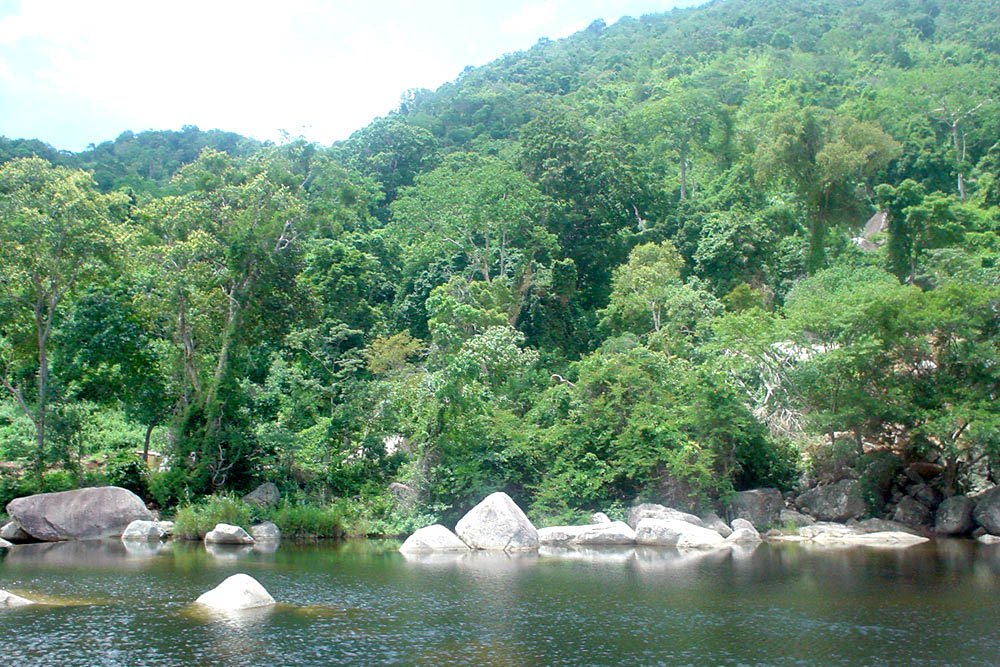
Chu Yang Sin National Park is located in Lak and Krong Bong districts, Dak Lak province, 60 km to the south-east of Buon Ma Thuot city. The national park encompasses a range of high mountains in the northern part of the Southern Annamite Mountains. The national park is centered on Mount Chu Yang Sin, which, at 2,442 m, is the highest point in the southern Annamites. The topography of the national park is characterized by steep slopes and narrow valleys.
May 28, 2025

Chu Mom Ray National Park lies in the two districts of Sa Thay and Ngoc Hoi in Kon Tum Province, central highlands of Vietnam. It is the only national park in Vietnam which shares the border with the two countries of Laos and Cambodia.
May 28, 2025
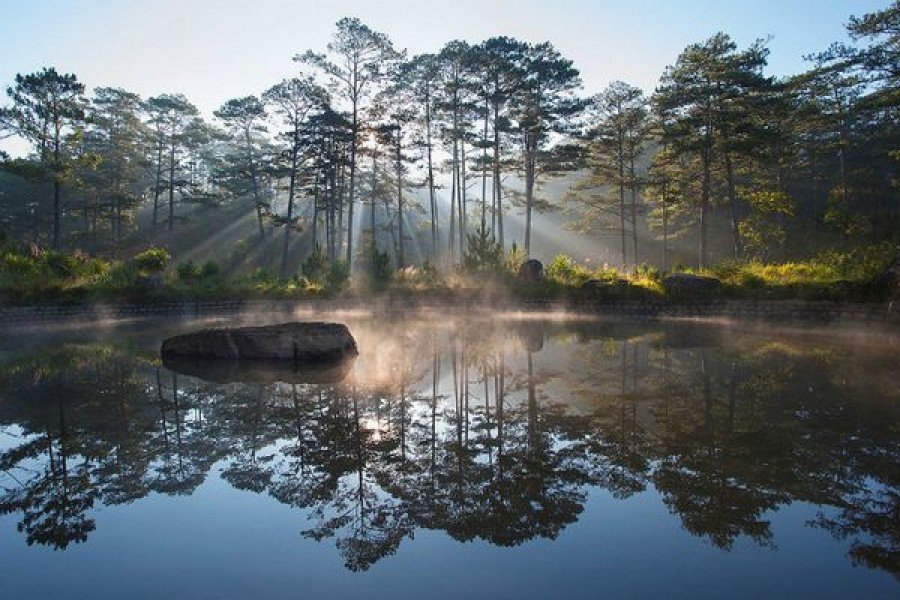
Bidoup Nui Ba National Park is situated in Lac Duong District, Lam Dong province in the central highlands of Vietnam. The park covers an area of 63,938 hectares, offering beautiful sceneries, stunning waterfalls, and diverse natural resources.
May 28, 2025
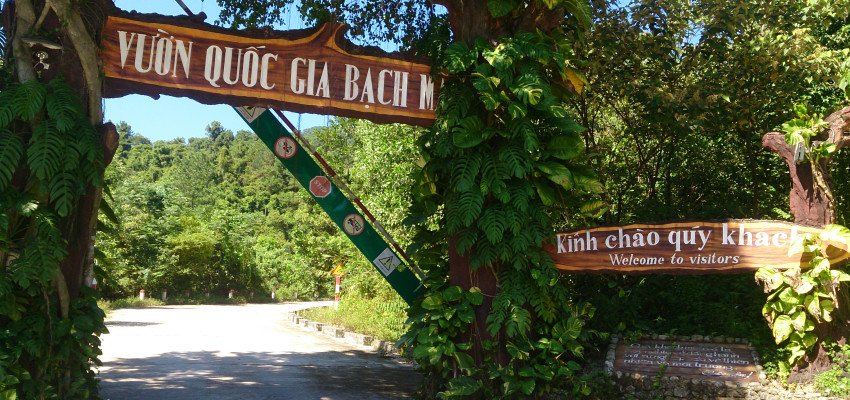
Bach Ma National Park is situated in the north central region of Vietnam, and the Annamite mountains. The national park lies on a high mountain ridge that runs west-east from the Laotian border to the East Sea at the Hai Van pass. This ridge interrupts the coastal plain of Vietnam, and, therefore, forms a biogeographical boundary between the faunas and floras of northern and southern Vietnam.
May 28, 2025
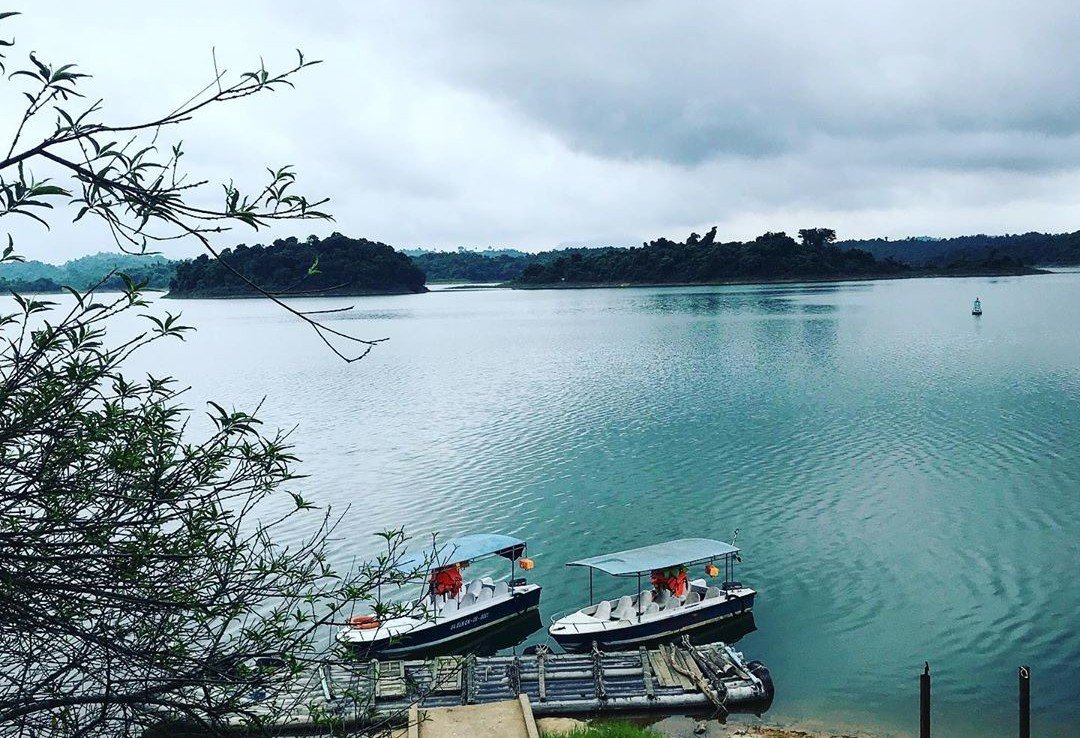
Ben En national park is situated in districts of Nhu Thanh and Nhu Xuan, Thanh Hoa Province about 200km from Hanoi. The park was established in 1992 and gradually expanded. It is not only a protected breeding ground for many rare creatures, but also an attractive destination for ecotourism.
May 28, 2025

Lai Chau is a province in the northwest of Vietnam sharing borderline with Yun Nan province of China, Son La province, Dien Bien province to the west and south, and Lao Cai province to the east. The province is situated at the altitude of 1,500m above sea level, comprising high mountains, pure streams and rivers.
May 28, 2025
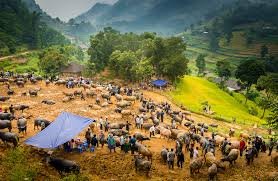
Bac Ha trekking is the best way to see Bac Ha as well as to discover its Sunday market, mountain scenery, and authentic local tribal villages.
May 28, 2025
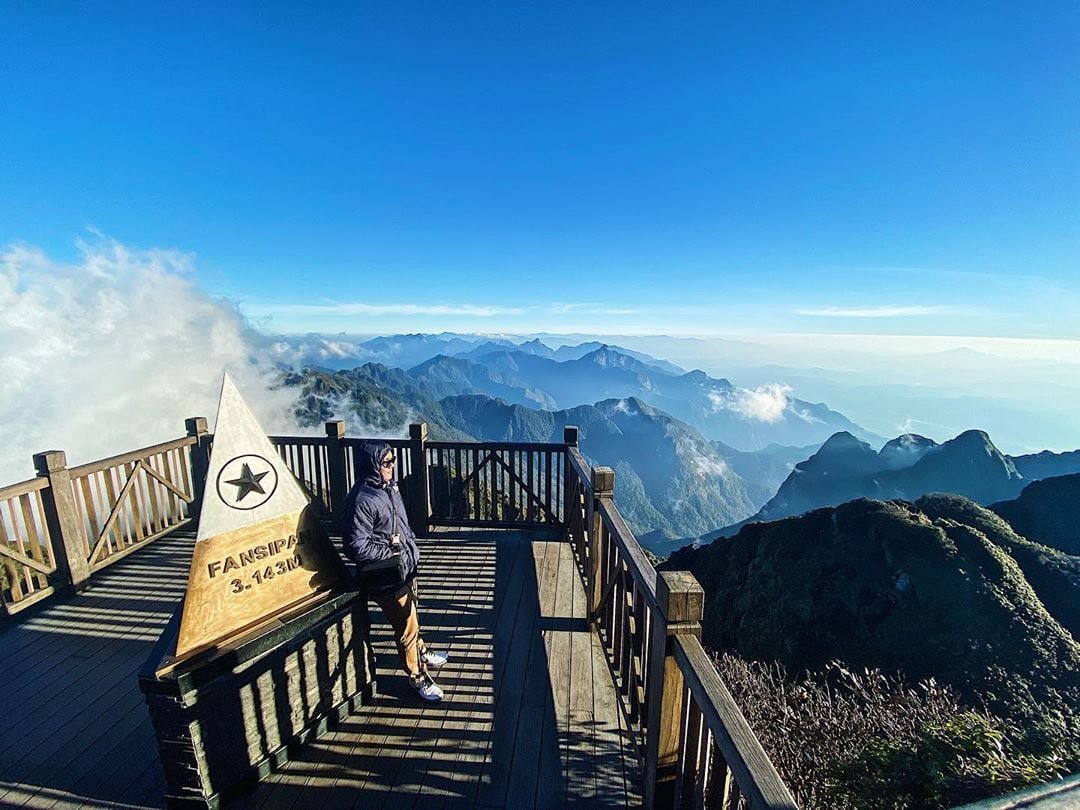
Fansipan Climbing is one of the most challenging activity in Vietnam. The Fansipan Mountain has long been the best hiking place in Vietnam. It is a favorite destination for intrepid travelers, and those who are fond of jungle trek, summit conquering, and mountain hiking.
May 28, 2025
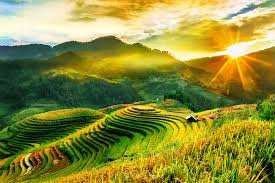
Sapa is a popular travel destination that offers the widest selection of trekking, hiking tours in Vietnam. It’s the place where a large number of tourists go to from Hanoi for some trekking through the beautiful scenery of North Vietnam’s mountains
May 28, 2025
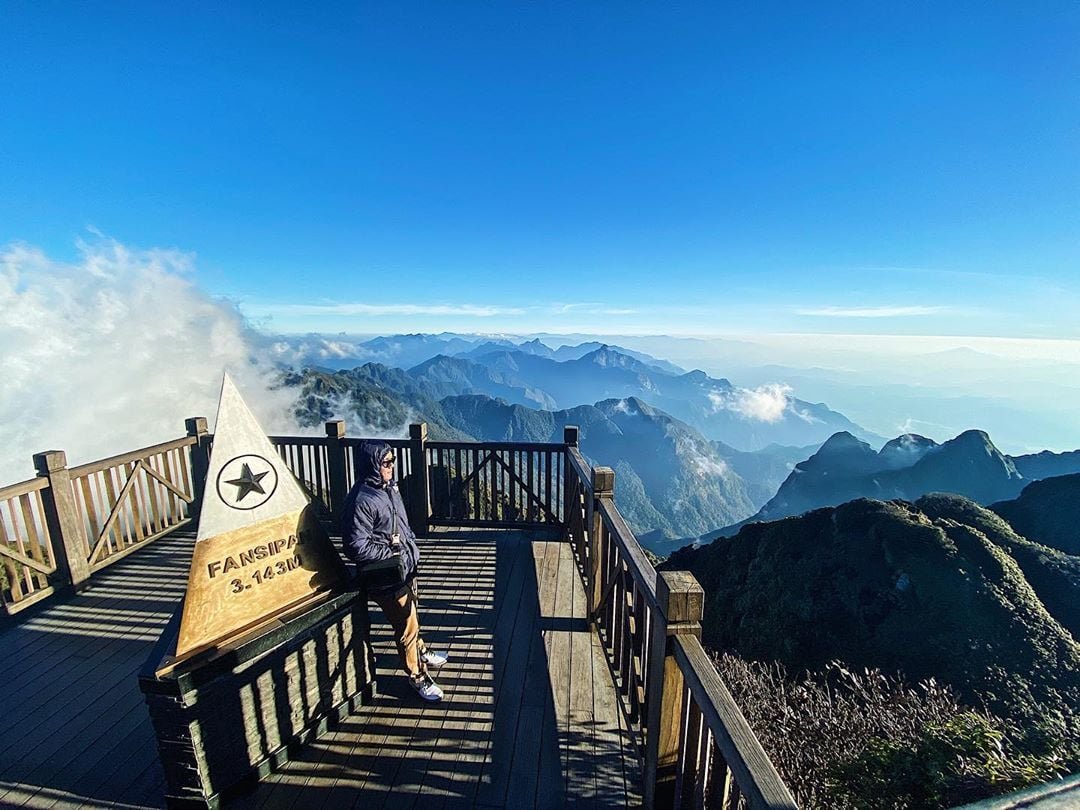
Hoang Lien National Park is situated at a height of 1,000m to 3,143m above sea level in the Hoang Lien Son Mountain Range in Sapa and Van Ban districts, Lao Cai Province, and a partly belongs to Than Uyen District, Lai Chau Province.
May 28, 2025
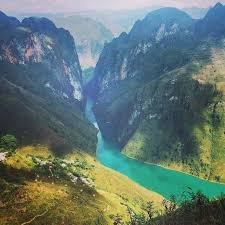
Ha Giang province is located in the northern mountainous area of Vietnam, sharing its borders with China in the north, Tuyen Quang province in the south, Cao Bang province in the east, and Yen Bai province, and and Lao Cai province in the west.
May 28, 2025
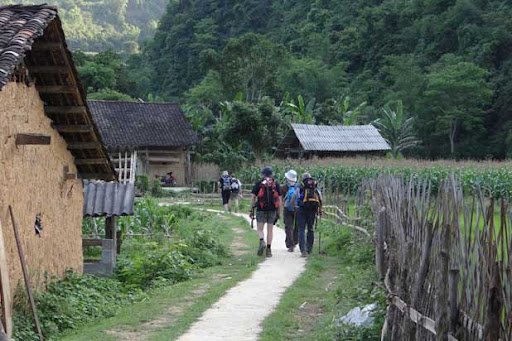
Cao Bang trekking is the best way to discover Cao Bang province as well as the northeast region of Vietnam. The place has been voted as one of top 5 trekking place in South East Asia. We at Golden Trail Travel Hiking Vietnam provide not only a wide selection of off the beaten path trekking trips in this region, but also much practical information about Cao Bang trekking, Cao Bang Vietnam trekking, Cao Bang trek, Cao Bang hiking.
May 28, 2025
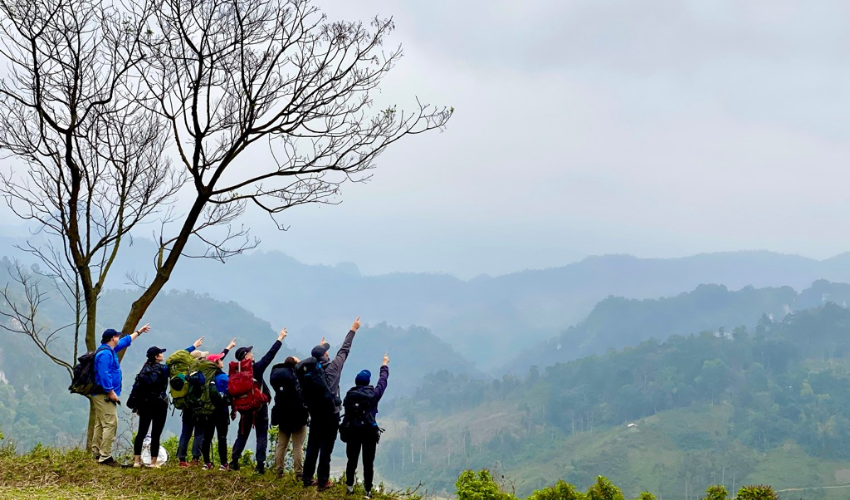
Ba Be National Park Trekking is the best way to explore the natural beauty and the unique system of flora and fauna of Ba Be. The activity also offers the chance to experience the rich ethnic culture of the Tay living within the park.
May 28, 2025
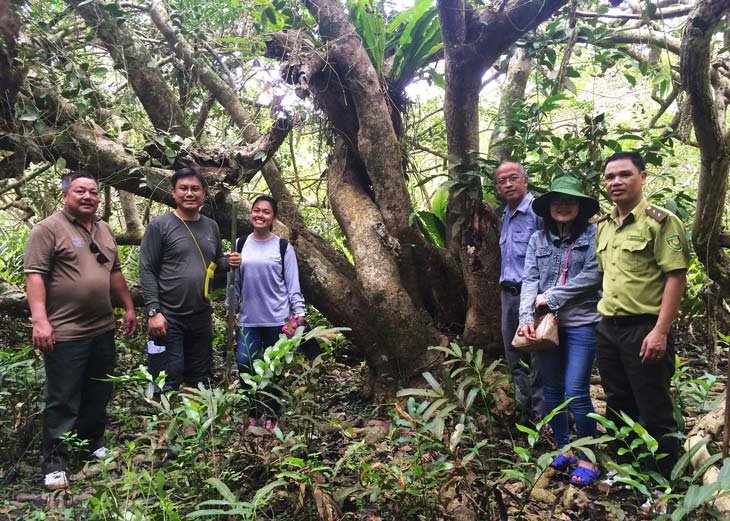
Bai Tu Long national park covers 15,783 hectares, of which forests and forest land make up 6,125 ha on more than 40 islands, and water surface accounts for 9,650 ha. It is home to 1,909 species of fauna and flora, including 72 types of animals and 30 kinds of plants listed in Vietnam’s Red Book of endangered species.
May 28, 2025

Cat Ba National Park is located in Cat Hai district, Hai Phong city in the northeast Vietnam. The national park is centered on Cat Ba island, a 28,500 ha island, which lies 20 km due east of Hai Phong city and immediately to the west of Halong bay. The national park also incorporates some of the small islands and marine waters situated to the east of Cat Ba island.
May 28, 2025
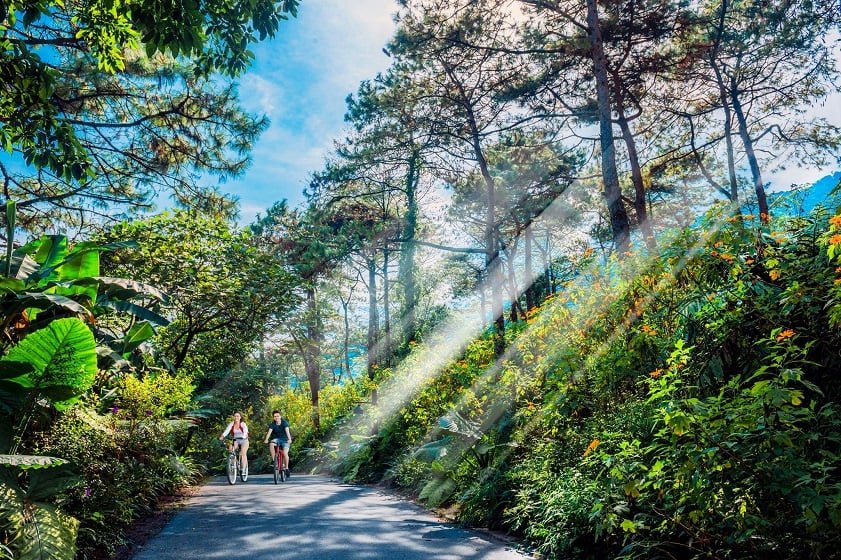
Coming to Ba Vi National Park, you will not only enjoy classic travel activities such as visit cactus gardens, Thuong Temple, French relics …you can also challenge yourself by joining a jungle trek through the park.
May 28, 2025
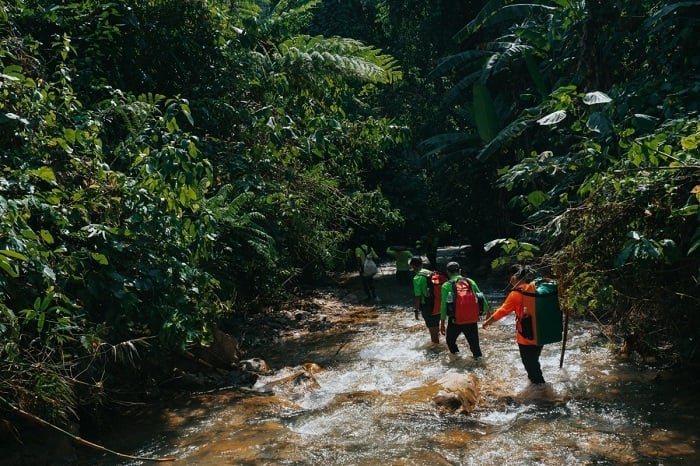
Xuan Son National Park is located 150 kilometers west of Hanoi at the entrance to the magnificent Hoang Lien Son mountain range, Phu Tho Province. The National Park is a great natural retreat and trekking area.
May 28, 2025
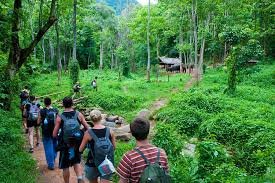
Cuc Phuong National Park is the centerpiece of Vietnam’s conservation efforts and one of the most accessible parks in Vietnam. The park is located about 120km from downtown Hanoi, and the car trip takes about 2-3 hours.
May 28, 2025
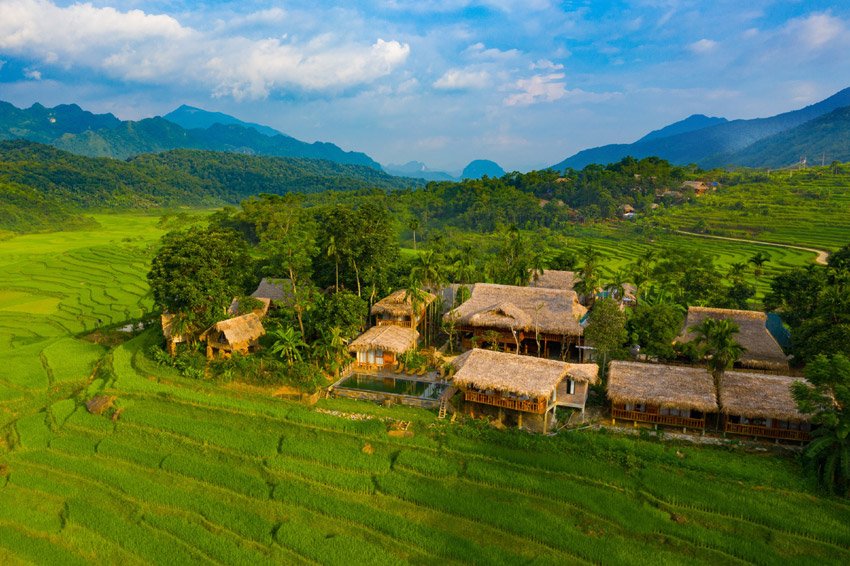
Pu Luong hiking tour is our most recommended trip since the itinerary offers you the chance to discover more the region including both the beautiful nature, rice terrace, and the authentic culture. You will have contact with different local Muong and Thai people on your Pu Luong Vietnam trek, and to experience their real, slow life.
May 28, 2025

Mai Chau Valley is located in Mai Chau District, Hoa Binh Province, approximately 135 km from Hanoi and 60 km from Hoa Binh City. Mai Chau Valley is surrounded by Thai villages scattered on the hill sides. Travelers come to Mai Chau to spend a night in a local stilt house and to experience the real life of the Thai people.
May 28, 2025